Rabat – The Royal Capital of Morocco – Morocco
I wanted to avoid the rush hour when everyone was driving to work, so I planned to leave Casablanca late in the morning. Until 10 o’clock, I spent some time with Coco on the balcony and we had breakfast. We cuddled the cats – Baby and Hitler, then I hit the road to Rabat. I chose the less-crowded road along the Atlantic Coast and enjoyed the views of the ocean. In less than one hour, I arrived in Temara – a suburb located approximately 10 kilometers from the city center of Rabat.
Yana – a young Russian lady I had found on Couchsurfing, had agreed to host me in Temara for a couple of days. She had settled in Temara because there she had a boyfriend, Mehdi – a true-born Moroccan. After she had visited Morocco for the first time, she had liked it so much that she returned to Rabat. She rented the tiny room where we were going to live together for a few days and taught English lessons to Russians via Skype.
While Yana was teaching English, I went for a walk around the beach, the seafront, and the casino in Temara. The beach was deserted. It was pretty cold. The sky was quite cloudy and the waves rather big. Only a few Moroccan families strolled along the seafront while walking a stroller with their blackish baby soundly asleep.
In the evening, I went out with Yana, Mehdi (her boyfriend), and Florianne (a French friend of theirs) at a fast-food in Temara. I ordered turkey skewers – dinde brochette, with French fries, orange juice, and panna cotta as dessert.
Rabat, the first day – Chellah and Kasbah les Oudaias
Short Description. I explored the Chellah archeological site, then went to the other side of Rabat, and spent the afternoon in the picturesque Kasbah les Oudaias on the Atlantic coast.
Long Description.
From Temara, I drove to Rabat’s Chellah – an archaeological site housing ruins of the ancient Roman city of Sala Colonia, later the residence of the Berber kingdom and the necropolis of the Merinids. The Chellah included ruins from the Roman period of the city: a triumphal arch, the ruins of Jupiter’s temple, the nymphs’ pool with a water castle, a craftsmen neighborhood, the capitol, the forum, the baths, a basilica, and a curia.
Next to the Roman city there also stood a vast Islamic complex that included: a necropolis with the mausoleum of Abou al-Hassan Ali, a medersa, the ruins of Abu Yusuf Yaq’ub’s mosque with a prominent minaret, a hammam, as well as other tombs richly decorated with typical Moroccan mosaic (zellij). The complex had an ancient look, but the boundaries of the old city hadn’t been excavated yet. You could explore only the center with the Roman Forum and the tombs of the Merinids. The archaeological site seemed poorly preserved. But the ruins impressed in size and denoted the monumentality and grandeur of a long-gone architecture.
Fortification walls with rhythmic battlements surrounded the Chellah. Two massive side towers decorated with Andalusian ornaments stood impressively next to the entrance gate. On the edge of the Chellah, a large garden with exotic plants offered well-deserved shade in the warmth of Morocco. And you could still see large stone blocks of the ancient pavement on the cardo of the old Roman city.
A Moroccan dressed in traditional clothes danced in front of the Chellah’s Andalusian gate. I learned to give a small tip for any video, photo, or parking spot without asking how much it cost. In Morocco, everything cost as much as you paid. If you asked, you were considered ignorant and you probably paid three times as much.
In the afternoon, I parked the car somewhere on the seafront in Rabat. I had lunch at one of the terraces on the corniche and admired the next target – Kasbah les Oudaias. Kasbah les Oudaias was the old medieval fortress inhabited by Almoravids and the oldest residential part in Rabat inhabited to that day. It was a small neighborhood located on a peninsula facing the sea, surrounded on three sides by water and fortifications and interspersed with white houses of Muslim refugees from Spain. Behind the kasbah, you could see a Muslim cemetery packed with ancient graves facing the sea.
Children were playing football in front of Bab Oudaia gate. I entered the kasbah through the monumental gate richly decorated with Andalusian ornaments. The kasbah was small, so I soon found myself close to the el-Atiqa Mosque – the oldest still-functioning mosque in Rabat. While walking the streets of the kasbah, you had the feeling of a Mediterranean town with dazzling white houses, blue foundations, and blue shutters.
Alleys in the kasbah were narrow, winding, and full of picturesque images at every corner. Often, entrances to the houses stood at the edge of a dead-end alley studded with colorful flower pots. The predominant colors in the kasbah were raw blue on the houses’ foundations and dazzling white of the whitewash – both projected on a perfect blue sky. Houses, instead, had simple architecture. They were parallelepipeds with squared windows vibrating in the chromatic composition.
Platform du Semaphore stood at the end of labyrinthine alleys overlooking the ocean and the beach full of surfers. As long as there was good light for photos, I randomly walked down the alleys of the kasbah. The Kasbah was so picturesque that you couldn’t get bored.
As I was dying of thirst, I bought an orange juice freshly squeezed in front of me by a peddler. Not far away from there, a Moroccan dressed in a djellaba as blue as the wall behind him played mandolin under a picturesque archway with garlands of roses. I dropped a few pennies in his mandolin box and then photographed him at will. If you wanted great photos in Morocco, one of the basic rules was to pay something, no matter how little. If you were stingy, then you only got blurry pictures, taken secretly.
The Andalusian Gardens had been developed on the edge of the kasbah and were one of the most frequented places by locals. A group of young men gathered there and played guitar and flute. Compared to the old medinas where garbage was often thrown in the street, the Andalusian gardens were cleaner than other places in Morocco. A kitten stuck to me in a garden corner. As soon as I cuddled it, it started purring and nestled on my lap right away. Even though it was full of fleas and its eyes were tearing, it seemed a happy kitten.
Before I returned to Temara, I met with Yana in front of the entrance to the medina. She gave me the keys to her house. She wanted to hang out with some of her friends in town and would come home later in the evening. When I arrived in Temara, I shook Yana’s door for about half an hour to unlock the latch. Nothing happened though. I couldn’t open the door. I called Yana to tell her I couldn’t enter the house. She told me to relax, come back to Rabat, and join their party.
Meanwhile, Yana’s neighbor, who lived downstairs, heard I couldn’t open the door and came upstairs. She invited me to stay with her until Yana would return home. I tried to open the door a few more times, and eventually, I managed to unlock it. When Yana came home, she was surprised she had such benevolent neighbors. She had never spoken to them.
Rabat, the second day – Medina and Ville Nouvelle
Short Description. I walked through the Old Medina, then crossed the street to the Ville Nouvelle, where I had lunch on the boulevard. In the afternoon, I went to Tour Hassan and the Mausoleum of Mohammed V. In the evening, I cooked a Moroccan tajine with Yana.
Long Description.
The medina in Rabat was very similar to the one in Casablanca. The medina had been fully fortified with high brick walls and built during the Almohads dynasty. It transposed you into the labyrinthine chaos specific to the ancient Arab towns. As you entered Bab el-Had gate, shops full of goods poured into the street with fruits, spices, and clothes. Postcards, carpets, slippers, and souvenirs. People walked randomly on the pedestrian streets. You could notice shabby and shriveled facades behind the shops. At the end of a street, prominent minarets appeared here and there from time to time. The call to prayer sounded in loudspeakers at fixed hours set by the imam.
A butcher’s shop displayed hooves of slaughtered animals – a lugubrious image, in which a dozen of insistent flies hummed all around. Nearby, a few boxes of different shapes and sizes with fish sold out pretty quickly. The fish still wagged its tail when you put it into your bag. A woman displayed for sale several hens on a piece of cloth. She tied up their legs so that they couldn’t run. Further on, a stand full of dressing gowns sat in the middle of the street. If you stumbled upon it, you might decide to buy something. Dried fruits, colorful candies, and spices poured into endless piles off the stalls.
The most important streets in the medina were exclusively commercial, but you could also find authentic shops when diving onto the corridors of a souq full of shoes, shawls, spices, or anything else. Side alleys in the medina seemed deserted though. Rarely someone passed under the arches connecting houses on either side of the street. You might have even felt afraid to walk there.
As you crossed the tram line opposite to the medina, the modern city had developed unexpectedly: boulevards lined up with palm trees and interwar buildings with Art Nouveau facades influenced by French colonists. Some buildings featured pertinent, round windows with two columns inside a circle. Rabat was the political and administrative capital of Morocco and the modern part was very similar to the French part of Casablanca. It had a cosmopolitan atmosphere of European influence. Multi-level buildings had ground floor arches as well as various ornaments and decorative friezes on the top floor.
The Post Office building marked the corner of a square and had a façade with a large clock on the apparent-brick background. On the other side of the street, the Train Station with simple, cubic forms and immaculate-white volumes stood as an example of modernist architecture from the early 20th century. A double alignment of palm trees flanked Avenue Mohamed V while in the green area in the middle of the boulevard, unhindered children played with pigeons.
I walked on this boulevard close to the Royal Palace, located in a neighborhood with chic, white villas. It was hot outside, so I entered the Museum of Modern and Contemporary Art – a museum hosted in a white building with a façade screened by perforated panels imitating traditional Arab mucharabian. The museum featured contemporary design and finishings, overhead lighting, and, of course, paintings and sculptures of young artists. At noon, I sat at a terrace near the museum and served pancakes with salted cheese, crouton soup, and French cappuccino.
In the afternoon, I randomly strolled through the modern part of Rabat, then went to Tour Hassan and the Mausoleum of Mohammed V. Tour Hassan was the place where the construction of the second great mosque of that time (after Samarra in Iraq) was intended. The mosque had remained unfinished though. As a result, a vast esplanade with the unfinished columns of the former mosque preceded the entrance to the kings’ tombs mausoleum.
Two gendarmes on horseback had the role to firmly guard the entrance to the mausoleum – something quite difficult for the horses that kept trotting. Non-Muslims could also enter the mausoleum. You could see the king’s tomb from an upper gallery while an imam murmured Koran passages without interruption somewhere downstairs.
Even though I arrived at Yana’s house in Temara early in the afternoon, I had to wait outside in the street for about one hour. I kept calling her until she finally answered and opened the door. In the evening, we cooked a chicken tajine together and, on this occasion, I saw exactly how the miraculous local food was prepared.
If you want to read more about the road trip through Morocco, here are all the Travelogues from Morocco (x21).
Have you been to Morocco or plan to go there? Leave a comment below this post and tell me what you liked in Morocco or what you want to see there.
Want to subscribe to my travelogues? Just leave your email in the subscription form below, and you’ll be notified when I publish a new post.
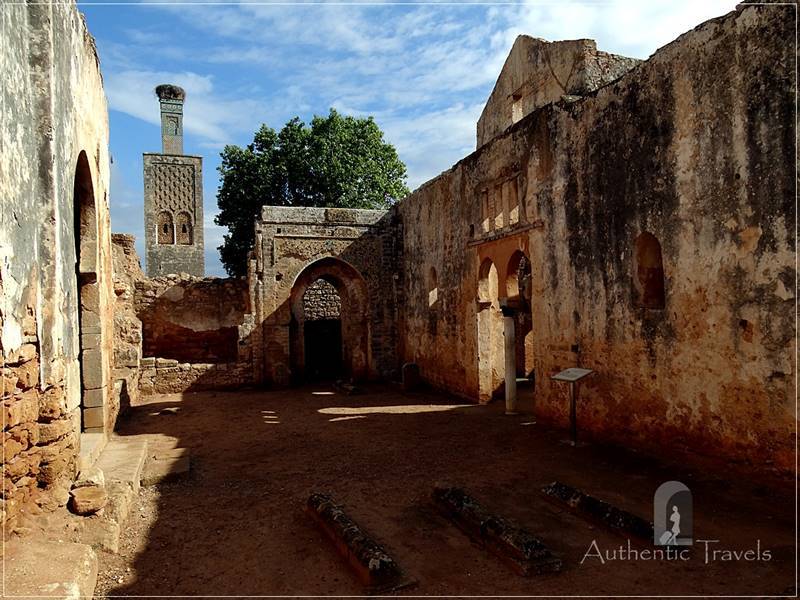
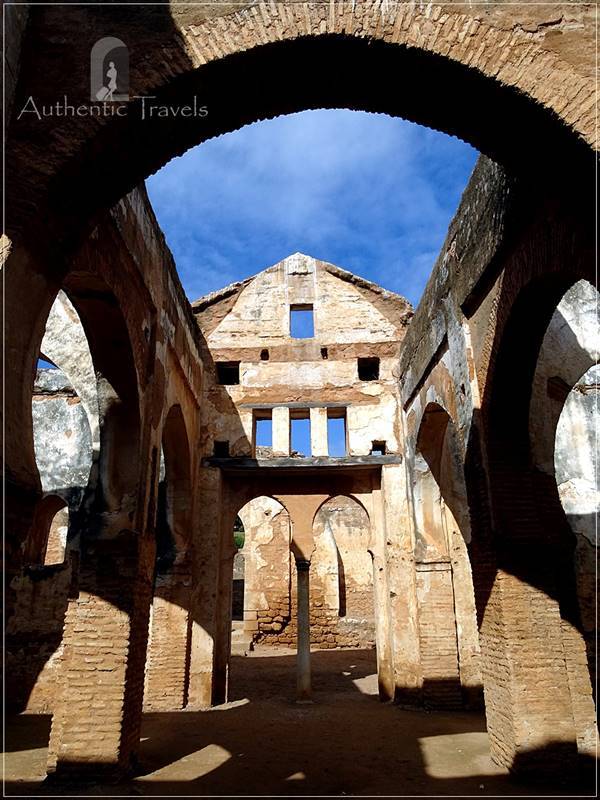
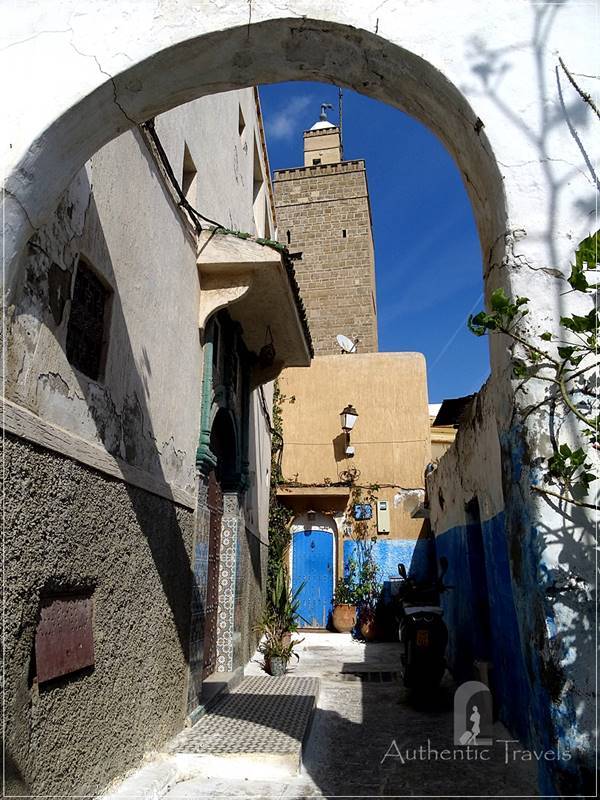
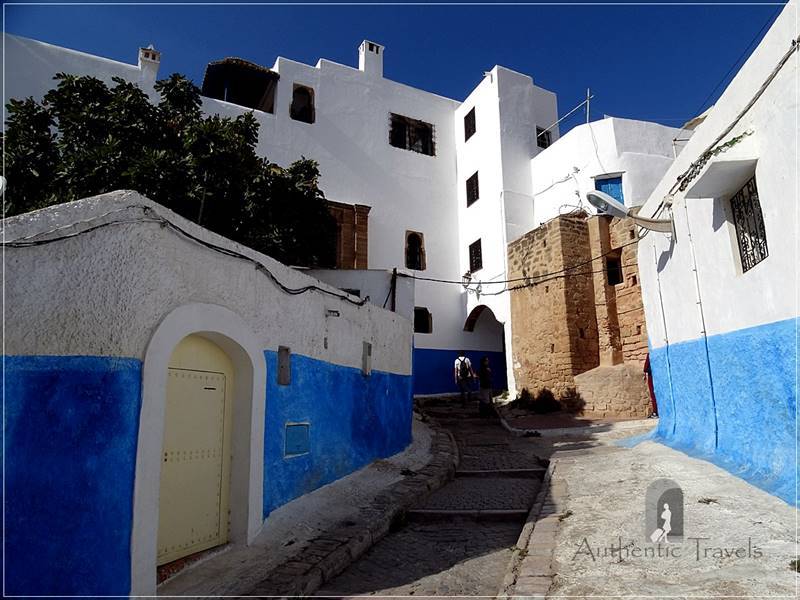
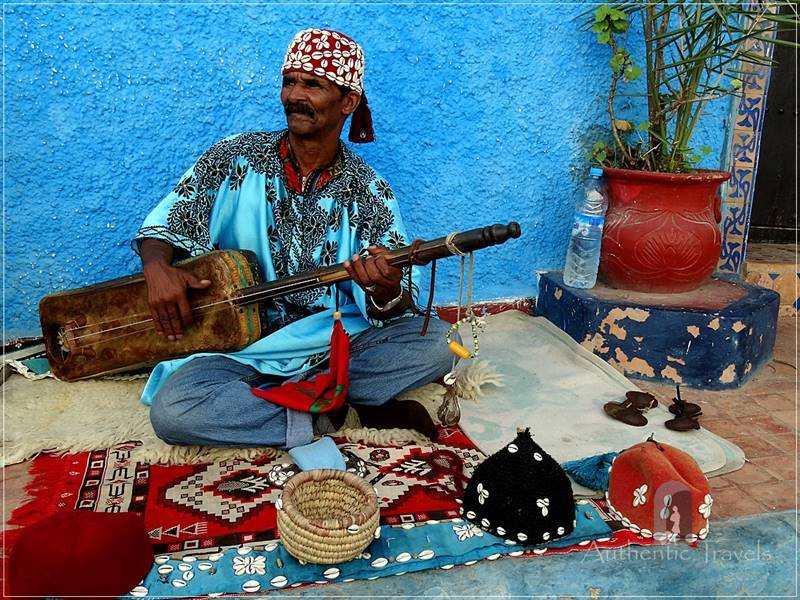
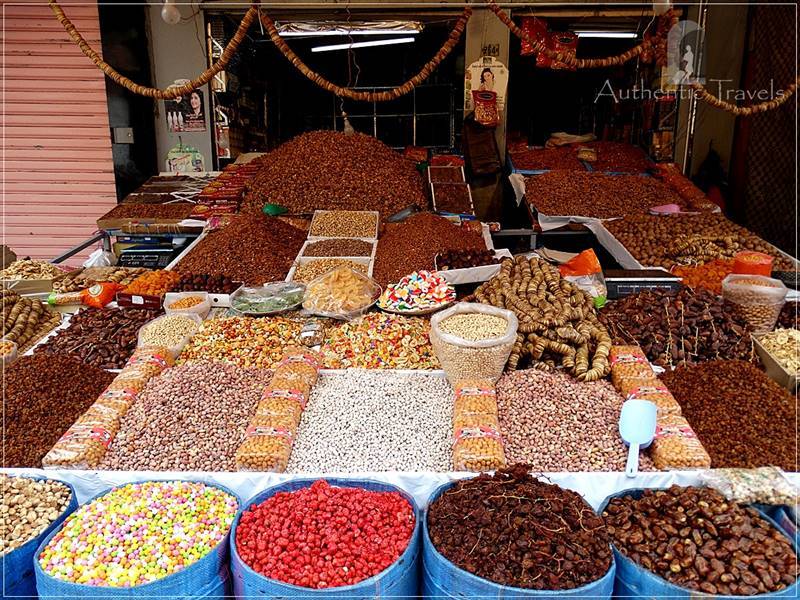
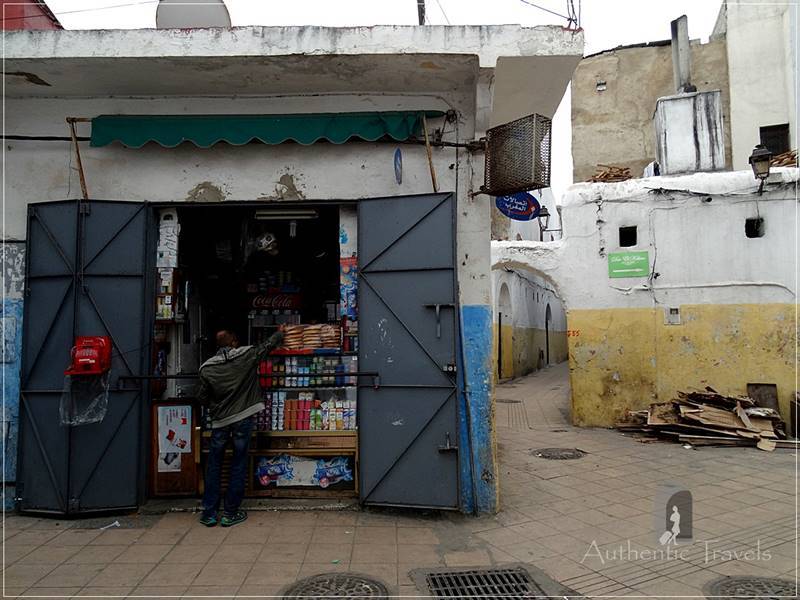
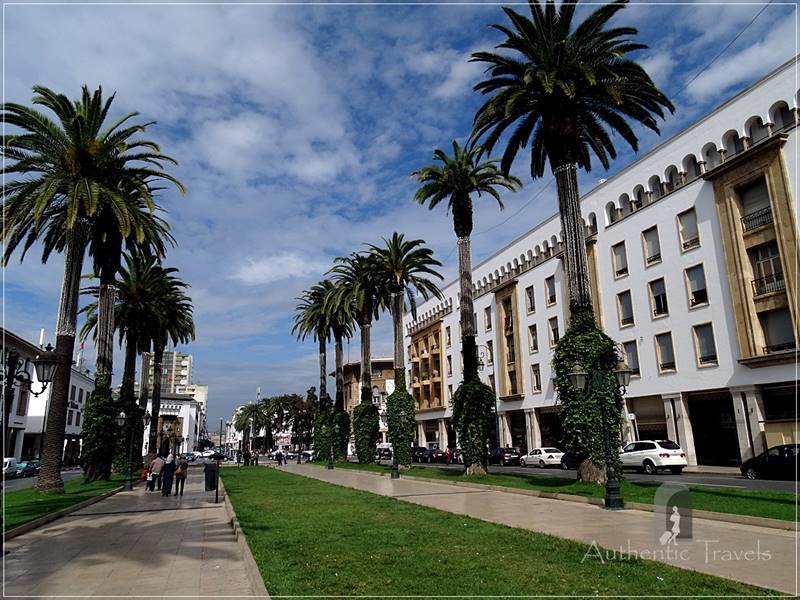
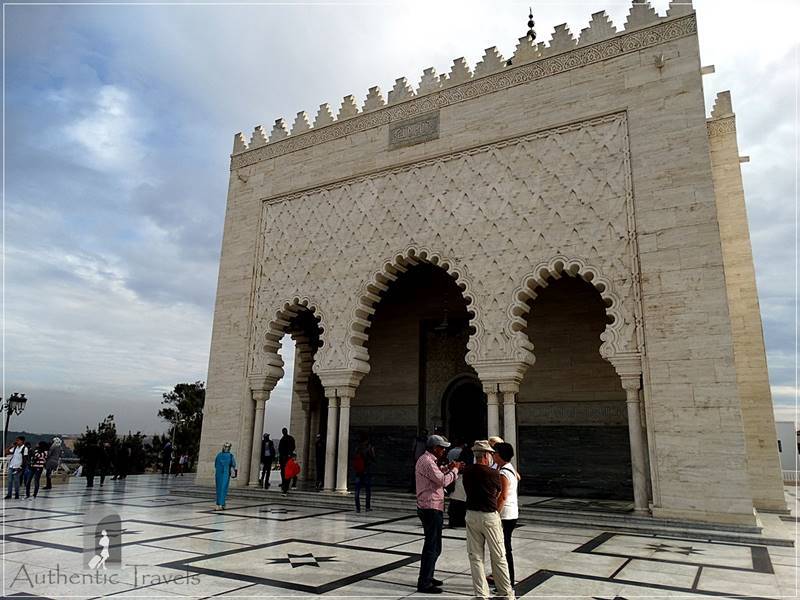
No comments yet.